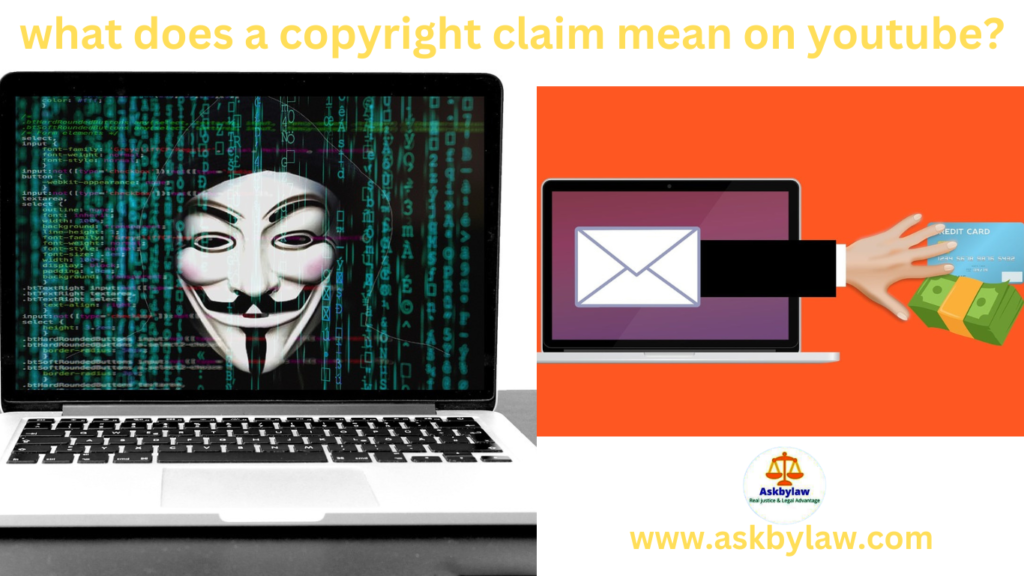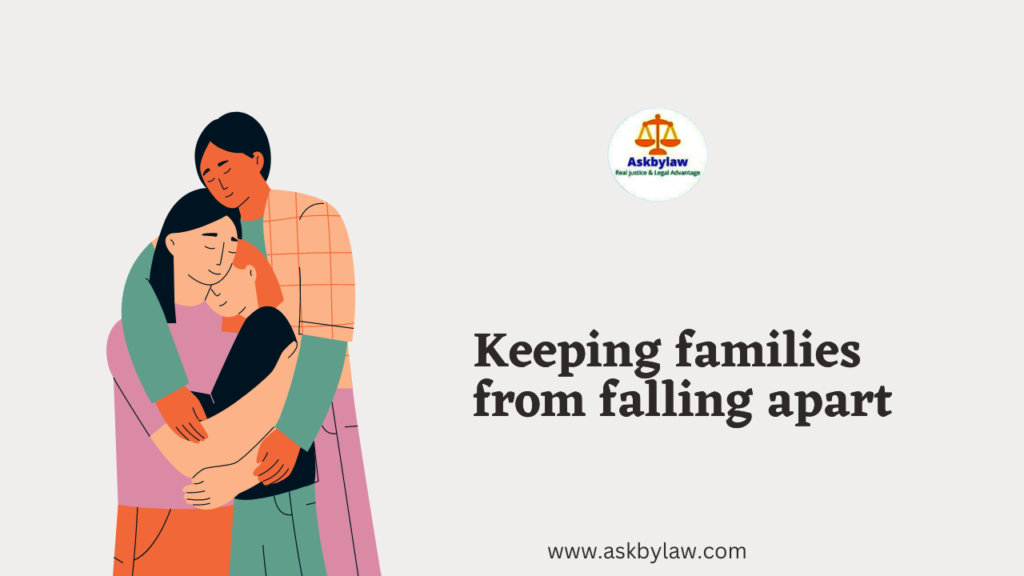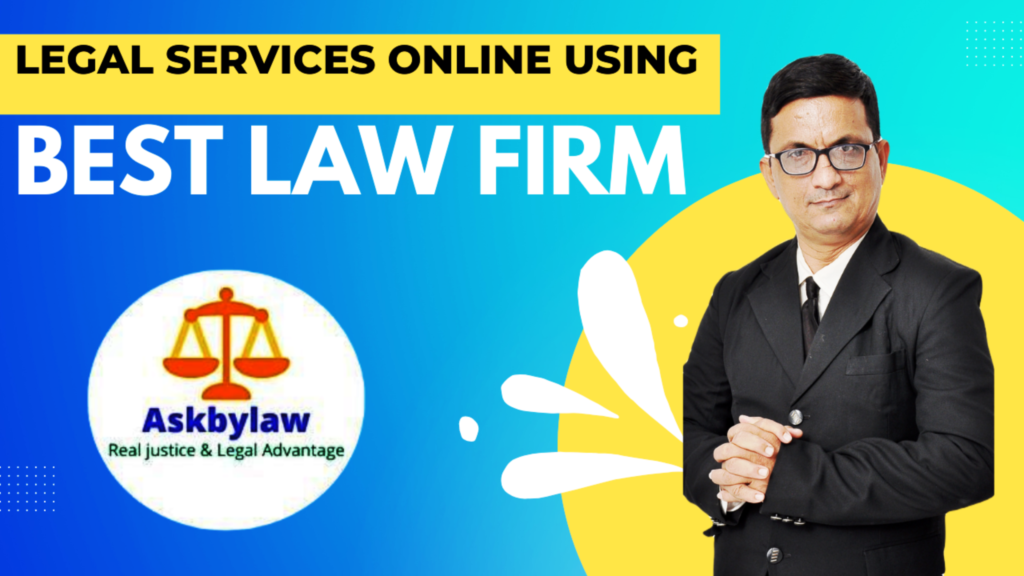
Have you uploaded some videoes to YouTube every day, only to find out that you have been sued by the copyright holder?
If, the said has happened to you, know that you are not alone. And claiming copyright claims are a common occurrence on YouTube, and they can be confusing for creators.
In today's blog, we discuss with you what is a copyright claim? How does it work? Also, What can you do if your video gets sued? We will provide information and explain it to you. We'll give you useful tips on "how to avoid copyright claims in the future"
Whether you're a new YouTuber or a Seasoned person. Read on to learn more about copyright claims on YouTube. Learn more about copyright claims on YouTube and protect your videos from copyright stress by reading our blog.
Subscribe to our blog for more tips on how to legally create and manage your YouTube channel well. Any copyright claim is a notice from YouTube that your video contains copyrighted material.
Any copyright claims may affect your ability to monetize your videos. There are two types of such copyright claims: Content ID claims and manual claims.
After the above discussion if you believe that your video does not infringe copyright. So there may be a copyright claim dispute for your channel. So you can take quick steps to avoid copyright claims on YouTube.
Did you aware that about 80% of YouTube video content that is protected by copyright? There are a lot of possible copyright claims there!
Learn how to comprehend copyright assertions on YouTube. We discuss with you. How to respond to them? And. How to prevent them in the future, in this blog post?
Understanding copyright assertions are crucial since they can have a significant impact on your YouTube channel. Continue reading to find out more about YouTube copyright issues and how to safeguard your channel. Also, take safety precautions for yourself.
I hope the said blog post is useful.
Whether are you a new YouTuber or a seasoned Professional? Read on to know more about copyright claim on YouTube.
Copyright claims are a common occurrence on YouTube, but how do they actually work? We'll look more closely at copyright allegations on YouTube in this section.
Including the role of YouTube's Content ID system, the process for filing a copyright claim. And the different types of copyright claim.
By understanding how copyright claims work, you'll be better equipped to protect your own content and deal with copyright claims filed against your videos.
A copyright claim can have a serious impact on your YouTube channel. Therefore, it's crucial to comprehend them and take precautions for your safety.
Continue reading to find out more about copyright disputes on YouTube and how to safeguard your channel.
YouTube's Content ID system is a tool that helps identify potential copyright violations. It works by scanning videos uploaded to YouTube to match copyrighted content that is registered with Content ID. If a match is found, the copyright holder can choose to claim the video. Which will give them exact control over how the video is used?
If you believe that your copyright has been violated on YouTube. You must file a copyright claim. The procedure for filing a copyright claim is relatively straightforward. You'll require to provide some basic information about the copyrighted material by you believe has been infringed, as well as the URL of the video you're claiming.
There are three main types of copyright claim on YouTube: first manual claim, second Content ID claim, and last third-party claim. Manual claims are filed by copyright holders who have not registered their content with Content ID. Content ID claims are filed by copyright holders who have registered their content with Content ID. A third-party claim is filed by companies that have been authorized by copyright holders to act on their behalf.
Copyright claims are common on YouTube. But, what are some of the most common scenarios that could lead to a copyright claim? The most frequent scenarios that can result in copyright claims are discussed in this section, including the unauthorised use of music, photographs, or video clips. We will also discuss the implications of fair use and transformative content on copyright claims.
By understanding the most common scenarios that can lead to copyright claims, you'll be better equipped to protect your own content and avoid copyright claims filed against your videos.
Copyright claims can seriously impact your YouTube channel, so it is important to understand the most common scenarios that can lead to copyright claims, and take steps to avoid them.
Fair use is a legal principle to permits limited use of copyrighted material without the permission of the copyright owner. Mutable material is material that has changed significantly from its original form, in some cases. Fair use and transforming content can protect you from copyright claims. However, it is important to consult with an attorney to determine whether your use of copyrighted material falls under fair use.
Read on to learn more about the most common scenarios that can lead to copyright claims on YouTube and how to avoid them.
• Some of the most common scenarios that can lead to copyright claims include:
• Using copyrighted music without permission or attribution.
• Using copyrighted images or video clips without permission or attribution.
• Sampling copyrighted music without permission or attribution.
• Creating a derivative work of copyrighted material without permission.
I hope this helps!
Copyright claims can have a significant impact on your YouTube channel. In this section, we'll discuss the consequences of receiving a copyright claim on YouTube, including potential consequences, such as video removal, copyright strikes, and channel fines. We will also highlight the importance of responding promptly and appropriately to copyright claims.
By understanding the impact of copyright claims, you will be better equipped to protect your own content and deal with copyright claims filed against your videos.
Copyright claims can have a serious impact on your YouTube channel, so it's important to understand the potential consequences and respond to copyright claims promptly and appropriately. Read on to learn more about the impact of copyright claims on YouTube and how to protect your channel.
If you receive a copyright claim on YouTube, there are several possible consequences. A copyright holder may choose:
Monetize your video and share revenue with the copyright holder.
If you receive a copyright claim, it's important to respond immediately. You can dispute the claim or accept it. If you dispute the copyright claim on YouTube, you will need to provide evidence to support your claim. If you accept the claim, your video will be affected as the copyright holder chooses.
If you receive three copyright strikes within a 90-day period, your channel will be terminated. This means that all your videos will be removed from YouTube and you will not be able to create a new channel.
In addition to copyright strikes, YouTube can also impose other penalties on your channel, such as:
Responding to copyright claims in a timely manner is important. If you do not respond to a copyright claim on YouTube within 30 days, the copyright holder may choose to remove your video or monetize your video without your permission.
• Reduced monetization opportunities.
• Restrictions on live streaming.
• Limitations on the ability to upload videos.
If you receive a copyright claim, it is important to respond promptly and appropriately. You should first review the claim to see if you believe it is valid. If you believe the claim is invalid on the basis of evidence, you can dispute the claim. If you believe the claim is valid, you can accept the claim or negotiate with the copyright holder. I hope this helps!
Copyright claims can have a significant impact on your YouTube channel. In this section, we'll discuss the consequences of receiving a copyright claim on YouTube, including potential consequences, such as video removal, copyright strikes, and channel fines. We will also highlight the importance of responding promptly and appropriately to copyright claims.
By understanding the impact of copyright claims, you will be better equipped to protect your own content and deal with copyright claims filed against your videos.
Copyright claims can have a serious impact on your YouTube channel, so it's important to understand the potential consequences and respond to copyright claims promptly and appropriately.
Read on to learn more about the impact of copyright claims on YouTube and how to protect your channel.
If you receive a copyright claim on YouTube, there are several possible consequences. A copyright holder may choose:
• Upload your video.
• Monetize your video and share revenue with the copyright holder.
• Block your video in certain countries.
If you receive a copyright claim, it's important to respond immediately. You can dispute the claim or accept it. If you dispute the claim, you will need to provide evidence to support your claim. If you accept the claim, your video will be affected as the copyright holder chooses.
If you receive three copyright strikes within a 90-day period, your channel will be terminated. This means that all your videos will be removed from YouTube and you will not be able to create a new channel.
In addition to copyright strikes, YouTube can also impose other penalties on your channel, such as:
If you receive a copyright claim, it is important to respond promptly and appropriately. You should first review the claim to see if you believe it is valid. If you believe the claim is invalid on the basis of evidence, you can dispute the claim. If you believe the claim is valid, you can accept the claim or negotiate with the copyright holder. Responding to copyright claims in a timely manner is important. If you do not respond to a copyright claim within 30 days, the copyright holder may choose to remove your video or monetize your video without your permission. I hope this helps!
GET IN TOUCH
Copyright claims can be a headache. But they don't have to be, we will walk you through the steps on how to respond to a copyright claim on YouTube. We will discuss available options, such as disputing the claim, seeking permission, or removing the disputed content. We will also explain the process of filing a counter-notice and its possible consequences.
By understanding the steps to resolve copyright claims, you will be able to protect your own content and combat copyright claims filed against your videos.
Copyright disputes can negatively affect your YouTube channel, so it's critical to know how to handle them and to respond quickly. Continue reading to find out more about resolving copyright disputes on YouTube and safeguarding your channel.
There are numerous actions you can take to settle a copyright claim you get on YouTube:
Remove disputed content. If you do not wish to dispute the claim or seek permission, you may remove the disputed content from your video. This will remove the copyright claim, but it will also remove the content from your video.
First, you need to review the claim to see if you believe it is valid. If you believe the claim is invalid, you can dispute the claim.
If you dispute the claim, you will require providing evidence to support your copyright claim on YouTube. You can do this by providing a link to the original source of the content or by explaining how your use of the content falls under fair use.
If you believe the claim is valid, you can obtain permission from the copyright holder to use their content. You can do this by contacting the copyright holder directly or by using YouTube's Content ID match tool. Enter a counter-notification. If you dispute a copyright claim and the copyright holder doesn't respond, you can file a counter-notice. This will allow you to restore your video and keep monetizing it.
If you issue a counter-notice, you will require providing specific information, including your contact information, the URL of the claimed video, and a statement that you believe the claim is invalid. You will also need to swear or affirm that the information you are providing is accurate.
If the copyright holder does not respond to your counter-notice within 10 business days, your video will be reinstated and you will be able to keep monetizing it. If the copyright holder responds, they can file a lawsuit against you. I hope this helps!

Your video's power to earn you money is gone.
First, you. Sign in to YouTube Studio. From the left menu than after selecting Copyright and Click New Removal request
Copyright protection applies to works created after January 1, 1978, and listen to you it is valid for the author's lifetime plus an extra 70 years.
Listening to you carefully, No. The only thing that will delete the claim is deleting the copyrighted content.
Hear to carefully. Deleting a video doesn't make the copyright claimant or copyright strike go away
In this blog post, we have discussed the basics of copyright claims are on YouTube. We've covered what copyright claims, how they work, and the potential consequences of receiving a copyright claim. We've also discussed steps you can take to resolve copyright claim on youtube.
We hope this blog post has been informative: If you, have any questions or doubt about copyright claims on YouTube, please feel free to comment below.
A copyright claim is a notification from YouTube that your video contains copyrighted material.
Copyright claims can have a significant impact on your YouTube channel.
There are three main types of copyright claims on YouTube: manual claims, Content ID claims, and third-party claims.
You can dispute a copyright claim, get permission from the copyright holder, or remove the disputed content from your video.
If you receive a copyright claim, it is important to respond promptly and appropriately
If you file a counter-notice, the copyright holder has 10 business days to respond. If they don't respond your video will be reinstated
In order to protect your content, it is important to be aware of copyright laws and policies. You may contact the YouTube Copyright Center and the U.S. You can do this by visiting the Copyright Office website. We encourage you to share your experiences with copyright claims on YouTube in the comments section below. We'd also love to hear your questions about copyright claims.
#Copyrightstrike #YouTube copyright #YouTubecopyright infringement #YouTube copyrightclaimprocess #YouTubecopyrightclaimappeal #YouTubecopyrightclaimconsequences #YouTubecopyrightclaimmonetization #avoidcopyrightclaimYouTube #PreventcopyrightclaimYouTube, #ProtectyourcontentonYouTube #CopyrightclaimvsCopyrightstrike #YouTubecopyrightclaim vs copyrightstrike #CheckcopyrightclaimYouTube

Sextortion is a growing crime in which criminals use threats of exposing sexually explicit photos or videos to extort money or other favors from victims. And Victims of this crime may experience catastrophic effects on both an emotional, social, and financial level.
An outline of sextortion law and self-defense tips for victims is provided in the said blog post.
Extortion is when you use compulsion, such as threats, to get someone to perform a task for you. The prevalence of the Internet and social media has given crime a new face. Similar to extortion, Sextortion is the act of illegally extorting money from someone to satisfy their financial demands through sexual exploitation and abuse.
Sextortion is when someone is coerced into doing something against their will by using guilt, leverage, or damaging information about them. Currently, these are all social media platforms for sextortion, such as Facebook, and Instagram, and Twitter is used for this commonly.
USA law does not classify sextortion as a separate felony. But if you are suspected of it, you could potentially face charges for other felonies including bribery and blackmail.
Let's look you at a few sextortion cases to better understand the penalties for this crime and the accusations the defendants were charged.

Although no specific enactment presently exists regarding sextortion in USA, you can be charged with several different crimes if you commit sextortion, including:
Depend on the circumstances of your case you could be charged with one or several of these crimes. Because sextortion generally involves crimes that do over the World Wide Web, you could be charged with a civil crime. Still, you could be charged with sexual exploitation of a minor under 18 U, if you’re indicted of committing sextortion against a minor .S. Code Section 2251. This law states that any person who forces or persuades a minor to engage in sexually unequivocal conduct can face up to 30 times in civil captivity.
Utmost sextortion crimes involve the use of a computer. However, you could be charged with unauthorized access to a computer under 18 U, if you hack a computer to commit sextortion. S.C. Section 1030. A felony conviction of this crime is punishable by over 10 years in prison and fines of a maximum of $ 250,000.
It’s important to understand the options available for pursuing legal action against the perpetrators if you have been a victim of sextortion. You can consider both civil and felonious proceedings to seek justice. In civil proceedings, you can file a action against the lawbreaker, seeking compensation for the damages you have suffered as a result of the sextortion. This can include fiscal losses, emotional torture, and any other detriment caused. In felonious proceedings, the state prosecutes the lawbreaker for their conduct, aiming to hold them responsible for the crime committed. Understanding the nuances of each option will help you determine the most applicable course of action grounded on your circumstances.
Civil and felonious proceedings differ in their nature, objects, and norms of evidence. In civil proceedings, the burden of evidence is generally lower than in felonious cases. You may need to demonstrate that it's more likely than not that the sextortion passed and caused you harm. The advantage of civil proceedings is that you have further control over the process and the eventuality for fiscal compensation. On the other hand, felonious proceedings bear the state to prove the guilt of the lawbreaker beyond a reasonable mistrustfulness. The advantage of felonious proceedings is that they can affect in the lawbreaker being held criminally responsible and potentially facing imprisonment or other felonious penalties.
Still, the decision to pursue felonious charges lies with the executing authority, and the process may take longer and involve less direct input from the victim.
Anyhow of the legal avenue you choose, having legal representation is essential. An attorney endured in handling sextortion cases can guide you through the legal process, cover your rights, and endorse on your behalf. They can help you gather and present supporting substantiation, similar as digital records, dispatches, or other applicable attestation, to strengthen your case.
Duly conserving and presenting substantiation is pivotal for both civil and felonious proceedings. It can substantiate your claims, establish a timeline of events, and contribute to the overall strength of your case. Working nearly with legal professionals and furnishing them with all available substantiation will greatly enhance your chances of carrying a favorable outgrowth in court.
When seeking legal expedient for sextortion, consider the options of civil and felonious proceedings grounded on your situation. Understand the advantages and challenges associated with each path and consult with an educated attorney to guide you through the process. Flashback, strong legal representation, and supporting substantiation are vital in presenting a compelling case in court. By taking decisive action and seeking justice, you not only empower yourself but also contribute to raising mindfulness and combating the intimidating frequency of sextortion crimes.
Valentina Pinto Sousa, plead guilty to extortion and unauthorized computer access charges after he hacked into computers belonging to dozens of young women–including Teen Girl of USA Cassidy Wolf–to obtain nude images and videos.
In court, Valentina Pinto Sousa admitted to using malware and remote administration tools to hack the webcams of computers and take nude photos of teenage girls and young adults. If the victims would not send him additional explicit pictures and videos, he threatened to post the pictures online.
Valentina pinto Sousa faced up to 10 years in prison and a Maximum fine of $1 million for his crimes but was sentenced to 19 months in state prison earlier this year.
If you are suffered with a crime related to sextortion, call an attorney at Askbylaw Associates today.
Louis John, of Antony Ana, was sentenced to six years in prison after being convicted guilty of computer hacking and wiretapping charges.
Authorities said Louis John disguised malicious software as music or videos and sent them to women and teenage girls. Through the software, Louis John could infiltrate more than 100+ computers and find sexually explicit photos in the computers’ memory.
He used the said photos to threaten victims, even following through on one threat when he posted nude images of a woman on her friend’s MySpace page.
Sextortion scams sometimes begin with seemingly innocuous contacts on social media or dating services. The victim will eventually be forced to transmit obscene photographs, get naked on camera, or perform sexual actions while on video by the offender. The photographs and videos that result can then be kept for ransom.
You find an email in your inbox that says the sender has one of your passwords. They threaten to publish your private images or videos until you give money, or explicit material, or engage in sexual activity. Many of these frauds rely on password harvesting, which could be a bluff unless you still have sensitive data on an old site.
Some of the creepiest sextortion situations involve the victim’s device getting infected with malware. Once inside, a hacker can gain access to cameras and microphones, as well as installing key loggers. This implies that someone could be watching your every step (in the vicinity of your computer). They can also find the passwords to all of your accounts using keyloggers. This may seem unlikely, but it happens more frequently than you might imagine.
Someone could get their hands on your sexual photographs or videos if you’ve ever sent them over social media or a chat app, or if you have them saved on one of those platforms. If you don’t comply with the demands, they may use your account to distribute the photographs to friends, relatives, and coworkers.
There is no specific "fraud" law on civil positions. A narrower law similar to the Stopping Harmful Image Exploitation and Limiting Division Act of 2019 ("Shield Act") is familiar, but the civil ordinance mainly enumerates other non-specific bills that cover the online aspects of the crime. According to a Brookings Institution study, there are several civil bills that have been used to try to prevent sextortion, especially those involving the death of children.
According to the Brookings Institution study, the most common civil enactment applied to make sextortion cases is 18U.S.C.§ 2251, which prohibits the sexual exploitation of children. Pursuant to§ 2251( a), “ Any person who employs, uses, persuades, induces, entices, or coerces any minor to engage in... any sexually unequivocal conduct for the purpose of producing any visual definition of similar conduct ” is subject to an obligatory minimal judgment of 15 times in captivity. Of the sextortion cases studied,§ 2251 was used in 55 to 65 of the cases.
Two affiliated bills — 18U.S.C.§§ 2252 and 2252A — are used to make the damage, distribution, and possession of material associated with child sexual exploitation and child pornography, specifically. Of the sextortion cases studied, these bills were used in roughly 38 and 24 of cases, independently.
Title 18U.S.C.§ 2422( b) governs the compulsion or enticement of a minor to engage in illegal sexual exertion. This enactment was used to make in 24 of sextortion cases. Still, like other applicable child pornography bills, this provision is applicable only in cases involving minors, which cases involve significantly more severe rulings than other general bills involving adult victims. For cases that don't involve a child victim or the specific sexual rudiments associated with sextortion, prosecutors may calculate on civil bills governing more general felonious geste , similar as highway robbery, stalking, or computer hacking.
The most relevant federal statute not specifically targeted at sextortion activity or minors, but that nevertheless is used to prosecute sextortion cases is the federal extortion statute—18 U.S.C. § 875 (d), which applies to:
Whoever with intent to extort from any person, any plutocrat or other thing of value, transmits in interstate or foreign commerce, any message containing, any trouble to injure the property, or character of the addressee or of another or the character of a departed person or any trouble to charge the addressee or any other person of a crime.
The extortion statute was used in 37% of the federal cases examined in the Brookings Institution report. Although other provisions within § 875 provide an enhanced 20-year sentence for the extortion of a ransom or a threat to injure the person of another, the coerced production of nonconsensual pornography warrants only a fine and a maximum 2+ year sentence.
When sextortion geste Is specially targeted against linked individualities, in 14 of cases, prosecutors have reckoned on 18U.S.C.§ 2261A, which is the civil stalking qualification.
In 17 cases, the civil acts presiding hacking or appropriation of gregarious media accounts have been exercised to make sextortion exertion. These are the civil identity larceny law ( 18U.S.C.§ 1028A) and the Computer Fraud and scurrility Act( 18U.S.C.§ 1030).

2. Cover yourself by being conservative about the information you partake online. Avoid telling sensitive details, similar as your address, phone number, or intimate images, to unknown individualities or on insecure platforms.
3. Be conservative of the information you partake on social media, as it can be used to exploit or impact you by malignant actors. Review and modernize your sequestration settings on social media platforms on a diurnal base to insure you have control over who has access to your particular information.
4. Strong passwords, secure online gesture, and sequestration settings play a vital part in precluding sextortion.
5. For all of your online accounts, including dispatch and social media, use unique and delicate passwords.
6. To add a redundant degree of security, enable two- factor authentication whenever possible. When dealing with individualities online, especially in converse apartments, social media, or dating apps, use caution.
7. Avoid participating unequivocal images or engaging in intimate exchanges with people you don't know well. Familiarize yourself with sequestration settings on social media platforms and acclimate them to limit the visibility of your particular information to trusted individualities only.
8. Mindfulness of sextortion warning signs and strategies to avoid falling victim is essential. Learn about the strategies used by extortioners, similar as blackmail, deception, and impersonation.
9. Be password for red flags, similar as unasked friend requests, requests for unequivocal images, or suspicious gesture from online contacts. However, trust your instincts and cut off communication incontinently. if someone attempts to force or manipulate you.
10. Flashback, It isn't your fault, and seeking backing is critical. Contact trusted musketeers, family members, or legal enforcement if you believe you're the victim of sextortion.
11. By staying informed and rehearsing caution, you can empower yourself to navigate the online world safely and help the ruinous consequences of sextortion.

Blocking and deleting emails or chatting as soon as possible ignore them to collect proper electronic evidence.
If you realize you're a victim of sextortion, or know someone else who is, call your local FBI office or toll-free at 1800 immediately call to FBI with proper digital evidence.
Yes, I could
May be psychological suffering, and serious mental health issues such as depression, Financial stress, disturb office/homework, and anxiety.
You read carefully, Sextortion is a serious crime in USA today. That can have a devastating impact on victim.
Have you been the victim of a sextortion crime, so don't worry about it, As well as, we have sufficient resources available to provide you with affordable legal support.
You are not alone.
About the Author: Viren Dave is the founder and partner of a law firm called Advocate Askbylaw. He specializes in enhancing engagement and user peace of mind by helping troubleshoot user legal queries. And, starting his career as a lawyer, he supports solving many legal issues in civil, criminal, property, consumer, family, and corporate law. You can find him on his blog or under mentioned social links:
GET IN TOUCH

"Are you curious about the latest developments in healthcare regulations and law" and how " Are you a healthcare professional, policy maker, or simply someone interested in the intersection of law? Learn about the latest developments in health law, from informed-informed and consent to the stages of "refusing" treatment, and how they may affect you or your organization. Are you curious? So today's summary of our articles gives you a thorough yet concise overview of the most important news and trends in healthcare regulations and law and keeps you updated and informed. Let's explore the fascinating and useful world of health law and find out its impact on your daily life, Join us then"
Healthcare regulations and laws are representative parts of many people involved. Licenses are issued to doctors for drug treatment- health care of any patient. Doctors have to treat the patients who come to them, keeping in mind the patient's rights. Join us if you are eager to swim in the vast ocean of healthcare regulations and laws and enjoy the journey of healthcare regulations and laws. Whether you are a doctor, healthcare professional, or involved in medicine, but your interest lies in health law, this article introduces healthcare regulations and laws for you. May prove to be informative and provide security. In today's article, it is our humble attempt to make the readers useful by further reading by providing interesting information on how to handle healthcare regulations and laws excerpts with their complexities. Health tax is not just a repository of law or its rules, but a welfare scheme for health professionals, patients, and people involved in healthy activity. Health law covers everything from examining a patient to treating and caring for them. So whether you are a doctor, a patient, or a health-related person, this article will excite you and pique your interest. Because healthcare regulations and laws affect your health and happiness.

Case birthrights are an overcritical aspect of healthcare regulations and law quittance and an essential element of health legislation. These birthrights, which are defended by both civil and country law, are aimed to ensure that cases admit safe, ethical, and high-quality care. The legit base for case birthrights can be set up in the Hippocratic Pledge, a law of ethics for croakers in senior Greece. In ultramodern moments, patient birthrights have been classed in colorful civil and country ordinances, involving the Case Tone- Determination Act, the Americans with Disabilities Act, the Health Insurance Portability and Responsibility Act (HIPAA), and the Affordable Care Act. There are several orders of case birthrights that are honored in healthcare regulations and law. These orders carry the birthright to the informed concurrence, the right to pierce medical commentaries, the birthright to sequestration and confidentiality, the birthright to reprobate treatment, and the birthright to quality care. Allow's to take a near face on each of these orders. The birthright to informed concurrence is maybe the most abecedarian of all patient birthrights. This birthright ensures that cases have the information they need to make informed opinions about their healthcare. Before any medical procedure or treatment, healthcare providers must gain the case's informed concurrence, which means the case must be completely grassed of the pitfalls and advantages of the procedure of healthcare regulations and law, as well as any options accessible. Informed concurrence is an important element of patient autonomy and is essential to maintaining patient trust in the healthcare system. The birthright to pierce medical commentaries is another important birthright of the case. Cases have the birthright to pierce their medical commentaries and to requisition clones of those commentaries. This birthright is defended by HIPAA, which sets exact healthcare regulations and laws descrying the sequestration and screening of patient medical information. Access to medical commentaries enables cases to understand their health conditions and make informed opinions about their healthcare. The birthright to sequestration and confidentiality is another major birthright of the case. Cases have the birthright to anticipate that their particular medical information will be kept nonpublic and secure. Healthcare providers must take away to cover patient information and share that information only with empowered individuals. This birthright is also defended by HIPAA, which sets exact guidelines for handling patient medical information.
The birthright to reprobate treatment is another important birthright of the case. Cases have the birthright to make opinions about their healthcare regulations and laws, and this includes the right to reprobate treatment. This birthright is especially important in cases where a case's religious or atheistic beliefs are discordant with certain medical treatments or procedures. Healthcare providers must admire a case's resolve to reprobate treatment, indeed if the resolution is made in an informed manner. After all, the birthright to quality care is an essential birthright of the case. Cases have the birthright to anticipate safe, operative, and ethical care from their healthcare providers. This right encompasses a wide range of effects, involving the use of substantiation-grounded drugs, the use of applications and operative treatment, and the quality of care in a culturally sensitive and compassionate manner. While patient birthrights are a foundation of healthcare regulations and laws, there are numerous effects and expostulations associated with administering these birthrights. A major challenge is the part of healthcare providers and associations in defending patient birthright. Healthcare providers have a responsibility to ensure that patient birthrights are admired and defended, but they may also face conflicts between patient birthrights and other interests, similar to cost constraints or organizational effectiveness. In some cases, healthcare providers may warrant the knowledge or coffers to completely understand and uphold patient birthrights.
Another challenge associated with administering patient birthrights is the difficulty in balancing these birthrights with other interests, similar to public health or public screening. For illustration, the birthright to sequestration and confidentiality may discord with the want to track contagious conditions or help acts of terrorism. In these cases, policymakers and healthcare providers must precisely balance the birthrights of individual cases with the requirements of society as an entire. Eventually, enforcing patient birthrights in practice can be grueling, especially given away Case birthrights are an important aspect of healthcare regulations and laws, and health law plays an important part in icing that these birthrights are defended. Cases have the birthright to admit safe, ethical, and high-quality care and healthcare regulations and law legislation provides the legit Frame to ensure that these birthrights are upheld. There are several orders of case birthrights that are honored in healthcare regulations and laws, involving the birthright to informed concurrence, the right to pierce medical commentaries, the birthright to sequestration and confidentiality, the birthright to reprobate treatment, and the birthright to quality care. Allow's to take a near face on each of these orders. The birthright to informed concurrence is one of the most abecedarian birthrights of the case. Informed concurrence means that cases must be completely grassed of the pitfalls and advantages of a medical procedure or treatment, as well as any options accessible. Before any medical procedure or treatment, healthcare providers must gain informed concurrence of the case. This birthright is important to ensure that cases have the information they need to make informed opinions about their healthcare and healthcare regulations and laws. The birthright to pierce medical commentaries is another important birthright of the case. Cases have the birthright to pierce their medical commentaries and to requisition clones of those commentaries. This birthright is defended by colorful ordinances, involving the Health Insurance Portability and Responsibility Act(HIPAA). Access to medical commentaries enables cases to understand their health conditions and make informed opinions about their healthcare. The birthright to confidentiality and sequestration is also a high birthright of the case. Cases have the birthright to anticipate that their particular medical information will be kept nonpublic and secure. Healthcare providers must take away to cover patient information and share that information only with empowered individuals. HIPAA sets exact guidelines for handling patient medical information. The birthright to reprobate treatment is another important birthright of the case. Cases have the birthright to make opinions about their healthcare regulations and laws, and this includes the right to reprobate treatment. This birthright is especially important in cases where a case's religious or atheistic beliefs discordant with certain medical treatments or procedures. Healthcare providers must admire a case's resolve to reprobate treatment, indeed if the resolution is made in an informed manner. After all, the birthright to quality care is an essential birthright of the case. Cases have the birthright to anticipate safe, operative, and ethical care from their healthcare providers. This right encompasses a wide range of effects, involving the use of substantiation-grounded drugs, the use of applications and operative treatment, and the quality of care in a culturally sensitive and compassionate manner.
While patient birthrights are an important aspect of healthcare regulations and laws, there are numerous effects and expostulations associated with administering these birthrights. A major challenge is the part of healthcare providers and associations in defending patient birthright. Healthcare providers have a responsibility to ensure that patient birthrights are admired and defended, but they may also face conflicts between patient birthrights and other interests, similar to cost constraints or organizational effectiveness. In some cases, healthcare providers may warrant the knowledge or coffers to completely understand and uphold patient birthrights. Another challenge associated with administering patient birthrights is the difficulty in balancing these birthrights with other interests, similar to public health or public screening. For illustration, the birthright to sequestration and confidentiality may discord with the want to track contagious conditions or help acts of terrorism. In these cases, policymakers and healthcare providers must precisely balance the birthrights of individual cases with the requirements of society as an entire. Eventually, enforcing patient birthrights in practice can be grueling especially given away the complication of the healthcare system and healthcare regulations and laws. Cases may not invariably be apprehensive of their birthrights, and healthcare providers may not invariably be suitable to effectively give those birthrights to cases. Likewise, enforcement of case birthrights may bear legit
Action or other conventional remedies can be time-consuming and precious. Despite these expostulations, patient birthrights remain an important element of healthcare regulations and laws quittance, and health law plays an important part in guarding those birthrights. By defending patient birthrights, healthcare providers and associations can make trust with cases, perfecting patient issues.

Case birthrights in health legislation are an essential element of healthcare regulations and law quittance. They cover the autonomy, quality, sequestration, and security of cases and ensure that cases are treated with reference and compassion. Case birthrights are grounded in ethical principles and elevated in colorful ordinances and regulations. In this composition, we will explore some exemplifications of case birthrights in healthcare regulations and laws. Right to informed concurrence The birthright to informed concurrence is an abecedarian birthright of the case. It ensures that cases have the information they need to make informed opinions about their healthcare regulations and laws. Informed concurrence means that healthcare providers must explain to the case the pitfalls and advantages of a medical procedure or treatment, as well as any options accessible. A case must give voluntary and informed concurrence before a procedure or treatment is accepted. The birthright to informed concurrence is defended by colorful ordinances and regulations. For illustration, the Case Tone- Determination Act requires that healthcare providers give cases information about their birthright to make opinions about their healthcare, involving the birthright to reprobate treatment. Also, the Americans with Disabilities Act requires healthcare providers to give an operator message about cases with disabilities, involving furnishing information in a popular format.
Right to pierce medical commentaries Cases have the birthright to pierce their medical commentaries and to requisition clones of those commentaries. The right to pierce medical commentaries is defended by colorful ordinances, involving the Health Insurance Portability and Responsibility Act(HIPAA). HIPAA requires healthcare providers to give cases, access to their medical commentaries within 30 days of a request. Access to medical commentaries is essential in cases to understand their health conditions and make informed opinions about their healthcare regulations and laws. Cases can exercise their medical commentaries to corroborate the delicacy of their opinion and treatment, cover their health status, and take their medical information with other healthcare providers. Right to sequestration and confidentiality, The birthright to sequestration and confidentiality is another serious birthright of the case. Cases have the birthright to anticipate that their particular medical information will be kept nonpublic and secure. Healthcare providers must take a way to cover patient information and share that information only with empowered individuals. Sequestration and the birthright to sequestration are defended by colorful ordinances and regulations, involving HIPAA. HIPAA requires healthcare providers to exercise and expose patient information only for purposes related to healthcare quittance, payment, and interpretation. Healthcare providers must also gain cases' spoken concurrence before participating in their medical information with third parties. Right to reprobate treatment Cases have the birthright to make opinions about their healthcare, and this includes the right to reprobate treatment. The right to reprobate treatment is especially important in cases where a case's religious or artistic beliefs discordance with certain medical treatments or procedures. The birthright to reprobate treatment is defended by colorful ordinances and regulations. For illustration, the Case Tone- Determination Act requires healthcare providers to inform cases of their right to reprobate treatment and to validate any turn down in the case's medical story. Also, the Americans with Disabilities Act prohibits demarcation against individuals who reprobate treatment grounded on their disability.
The Right to quality care Cases has the birthright to anticipate safe, operator, and ethical care from their healthcare providers. The right to quality care encompasses a variety of effects, involving the use of substantiation-grounded drugs, the use of applications and operative treatments, and the quality of care in a culturally sensitive and compassionate manner. The birthright to quality care is defended by colorful ordinances and regulations, involving the Affordable Care Act. The Accessible Care Act includes vittles leveled at perfecting the quality of healthcare quittance, involving promoting the use of substantiation-grounded drugs and encouraging the use of case- concentrated medical homes.

Case birthrights are an essential portion of healthcare regulations and laws quittance. They cover the autonomy, quality, sequestration, and security of cases and ensure that cases are treated with reference and compassion. Still, enforcing patient birthrights can be grueling, and there are numerous effects and expostulations that healthcare providers and cases may face. In this composition, we will explore some of the effects and expostulations in administering patient birthrights. Lack of mindfulness and instruction One of the most important expostulations in administering patient birthrights is the lack of mindfulness and instruction. Numerous cases aren't apprehensive of their birthrights or don't understand how to exercise those birthrights. Healthcare providers may also be ignorant of their legit scores descrying case birthrights or warrant the necessary training to ensure that cases' birthrights are defended.
To meet this challenge, healthcare providers must prioritize patient instruction and mindfulness. Cases should be handled with clear and popular information about their birthrights, and healthcare providers should be trained to fête and uphold those birthrights. Case instruction and mindfulness can be eased through the use of patient textbooks, instructional vids, and patient lawyers. Authority imbalance authority imbalances between healthcare providers and cases can also make administering patient birthrights querying. Cases may feel bullied or helpless when communicating with healthcare providers, especially in situations where they're in pain or torture. In the other phase, healthcare providers may feel that they've further knowledge and administration and don't take cases' enterprises or preferences seriously. To meet this challenge, healthcare providers must work to establish a cultivation of collaboration and reference. Healthcare providers must hear cases' enterprises, involve them in the resolution-timber, and work to make trust and fellowship. Cases should feel invested to interrogate questions, express their preferences and assert their birthrights. Sequestration and Confidentiality Enterprises Another significant challenge in administering patient birthrights is sequestration and confidentiality enterprises. Cases may be reluctant to partake particular or sensitive information with healthcare providers, especially if they don't feel confident that their information will be kept nonpublic. Healthcare providers may also struggle to balance cases' sequestration birthrights with the want to partake information with other providers or misbehave with legit scores.
To manipulate this challenge, healthcare providers must take a way to cover cases' sequestration and confidentiality. Healthcare providers should exercise secure styles of messages and share information only on a want-to-know base. Cases should be grassed of their birthrights to sequestration and confidentiality and handled with clear information about how their information will be exercised and participated. Restricted legit
Remedies Eventually; there may be restricted legit remedies accessible to cases who feel their birthrights have been transgressed. They do not see where to turn if they buy their birthrights have been transgressed, or do not have the fiscal coffers to shadow legit
action. Healthcare providers may also be reluctant to report lawbreaking of case birthrights, especially if they sweat legit or professional consequences. To meet this challenge, healthcare providers must prioritize translucency and responsibility. Healthcare providers should have clear programs for reciting and revenging lawbreaking of case birthrights and inform cases of their options for expedient. Legit backing programs can also be helpful in furnishing cases with the coffers they need to shadow legit action. Administering patient birthrights can be grueling, but icing cases admit safe, operative, and compassionate care is essential. By addressing effects similar to lack of mindfulness and instruction, authority imbalances, sequestration and confidentiality enterprises, and restricted legit remedies, healthcare providers can work to cover and uphold patient birthrights. Cases should feel invested to assert their birthright and handle the coffers they need to endorse for themselves. Eventually, enforcing patient birthright advantages both cases and healthcare providers by promoting trust, collaboration, and quality healthcare regulations and laws quittance.

Case birthrights are an essential portion of healthcare regulations and laws quittance. They cover the autonomy, quality, sequestration, and security of cases and ensure that cases are treated with reference and compassion. Still, enforcing patient birthrights can be grueling, and there are numerous effects and expostulations that healthcare providers and cases may face. In this composition, we will explore some of the effects and expostulations in administering patient birthrights. Lack of mindfulness and instruction One of the most important expostulations in administering patient birthrights is the lack of mindfulness and instruction. Numerous cases aren't apprehensive of their birthrights or don't understand how to exercise those birthrights. Healthcare providers may also be ignorant of their legit scores descrying case birthrights or warrant the necessary training to ensure that cases' birthrights are defended. To meet this challenge, healthcare providers must prioritize patient instruction and mindfulness. Cases should be handled with clear and popular information about their birthrights, and healthcare providers should be trained to fête and uphold those birthrights. Case instruction and mindfulness can be eased through the use of patient textbooks, instructional vids, and patient lawyers. Authority imbalance authority imbalances between healthcare providers and cases can also make administering patient birthrights querying. Cases may feel bullied or helpless when communicating with health care providers, especially in situations where they're in pain or torture. In the other phase, healthcare providers may feel that they've further knowledge and administration and don't take cases' enterprises or preferences seriously. To meet this challenge, healthcare providers must work to establish a cultivation of collaboration and reference. Healthcare providers must hear cases' enterprises, involve them in the resolution-timber, and work to make trust and fellowship. Cases should feel invested to interrogate questions, express their preferences and assert their birthrights. Sequestration and Confidentiality Enterprises Another significant challenge in administering patient birthrights is sequestration and confidentiality enterprises. Cases may be reluctant to partake particular or sensitive information with healthcare providers, especially if they don't feel confident that their information will be kept nonpublic. Healthcare providers may also struggle to balance cases' sequestration birthrights with the want to partake information with other providers or misbehave with legit scores. To manipulate this challenge, healthcare providers must take way to cover cases' sequestration and confidentiality. Healthcare providers should exercise secure styles of messages and share information only on a want-to-know base. Cases should be grassed of their birthrights to sequestration and confidential and handled with clear information about how their information will be exercised and participated. Restricted legit
Remedies Eventually; there may be restricted legit remedies accessible to cases who feel their birthrights have been transgressed. They do not see where to turn if they buy their birthrights have been transgressed, or do not have the fiscal coffers to shadow legit
Action. Healthcare providers may also be reluctant to report lawbreaking of case birthrights, especially if they sweat legit Or professional consequences. To meet this challenge, healthcare providers must prioritize translucency and responsibility. Health care providers should have clear programs for recruiting and revenging lawbreaking of case birthrights and inform cases of their options for expedient. Legit backing programs can also be helpful in furnishing cases with the coffers they need to shadow legit action. Administering patient birthrights can be grueling, but icing cases admit safe, operative, and compassionate care is essential. By addressing effects similar to lack of mindfulness and instruction, authority imbalances, sequestration and confidentiality enterprises, and restricted legit In remedies, healthcare providers can work to cover and uphold patient birthrights. Cases should feel invested to assert their birthright and be handed the coffers they need to endorse for themselves. Eventually, enforcing patient birthright advantages both cases and healthcare providers by promoting trust, collaboration, and quality healthcare regulations and laws quittance.

In conclusion, case rights are essential to ensure that cases admit high-quality, compassionate care that respects their autonomy, quality, sequestration, and safety. Despite significant progress in recent times, patient rights continue to face numerous challenges and arising issues, particularly with regard to new technologies and healthcare delivery models. To promote patient rights, healthcare providers must prioritize case-centered care that recognizes the unique requirements and gets of each case. Cases should be involved in making opinions about their care, and healthcare providers should be responsive to patient enterprises and preferences. Healthcare providers should also work to promote translucency and responsibility by furnishing clear and accessible information about their programs and practices. Also, patient education and mindfulness are pivotal to guarding patient rights. Cases should be handled with clear and accessible information about their rights and empowered to advocate for themselves. Healthcare providers should work to reduce smirch and promote patient engagement and advocacy by furnishing openings for cases to partake in their gets and enterprises. Eventually, it's important to fête that patient rights aren't stationary and will continue to evolve as health care delivery changes. It's imperative that healthcare providers remain apprehensive and visionary in addressing arising issues and patient rights, similar to telemedicine, substantiated drug, and trends in internal health and dependence treatment. Overall, guarding patient rights isn't only an ethical imperative, but also necessary to promote high-quality, effective healthcare delivery. In prioritizing case-centered care, patient education and mindfulness, and translucency and responsibility, healthcare providers can help ensure that all cases admit the care they need and earn. Conclusion Recent developments and unborn trends in case rights punctuate the significance of guarding cases' autonomy, quality, sequestration, and safety. As health care delivery continues to evolve, it'll be essential to ensure that patient rights are upheld and that cases are given the coffers and support they need to endorse for themselves. By prioritizing case-centered care, patient education and mindfulness, and translucency and responsibility, healthcare providers can promote high-quality, compassionate care for all cases.
If you are a healthcare provider, pay attention! Do you know about the importance of healthcare compliance laws? As a skilled healthcare provider: it's important and necessary to make sure you are following the laws to protect your patients and your practice. In this article on Medical Law, we'll talk and walk you through key aspects of healthcare compliance. Including HIPAA ; the False Claims Act and more. Stay ahead of today's game and keep up your practice by following these essential tips.
Healthcare compliance has become more complex than ever in today's environment. As well as any number of rules and regulations healthcare providers must provide safe and effective care to their patients while protecting the integrity of the healthcare system; you must stay ahead of the game to ensure that.
Compliance in healthcare in its current state refers to compliance with laws and regulations designed to prevent fraud and abuse in the healthcare system. As well as protect patient privacy and ensure quality of care. as well as the HIPAA in Healthcare Compliance Act; Law of False Claims; Stark Law; Includes a wide range of regulations, such as anti-kickback statutes and the Affordable Care Act.
HIPAA is probably the most well-known healthcare compliance law in America. And it sets national standards for the privacy and security of personal health information. It also prohibits the sharing of this information without the patient's consent. any False Claims Act; On the other hand, it prohibits individuals and companies from submitting false or fraudulent claims to government programs such as Medicare and Medicaid. Such laws are designed to protect the healthcare system from fraud and abuse and ensure that patients receive high-quality care that must be followed.
Here today we will provide an in-depth look at healthcare compliance and its importance in the healthcare industry. And we'll study and review healthcare's most critical compliance laws and provide tips and best practices to help healthcare providers stay in compliance. Whether your category is as a healthcare provider or as a patient; Understanding healthcare compliance is essential and imperative to ensure safety and quality of healthcare services to human beings.
In USA. The Health Insurance Portability and Accountability Act: also known like HIPAA; is a comprehensive piece of legislation created to safeguard the confidentiality and privacy of individual health compliance records. HIPAA law was passed in 1996 with the intention of ensuring that private medical data is only disclosed to those with a genuine need to know. Healthcare providers and health plans and other organizations that handle patient information. Such as clearinghouses and commercial partners are subject to the statute..
The privacy and security requirements of HIPAA are vast and precise. With regard to who has access to personal health information as well as how it can be used and disclosed, the privacy regulation establishes national rules for its protection. Before using or disclosing protected health information for reasons not stated in the notice, covered entities are required to give patients a notice of their privacy practices and acquire written consent.
On the other side, the security rule specifies federal guidelines for the protection of electronic PHI. The administrative, physical, and technical measures for the security, integrity, and accessibility of electronic patient information must be implemented by covered entities.
Healthcare providers and other covered entities need to take a number of actions to stay in compliance with HIPAA. These consist of:
To find potential vulnerabilities and close any security gaps by regularly conducting risk assessments.
putting into practice rules and processes for handling protected health information, as well as training staff on best practice for privacy and security.
Along with these recommendations healthcare providers should make sure that they have reliable data encryption, access controls, and backup protocols to guard against data loss or theft.
HIPAA infractions can result in serious fines and penalties as well as harm to a company's reputation. Healthcare organizations must priorities HIPAA compliance and take it seriously in order to prevent severe repercussions. Healthcare providers can make sure they're delivering safe and effective care while preserving patient privacy and confidentiality by putting the essential measures in place and remaining up to date on the newest privacy and security requirements.
An effective tool in the fight against fraud against the government is the False Claims Act . A federal statute known like the (FCA) holds anyone responsible for willfully submitting false claims to the government for payment accountable. The said act goals are to prevent fraud against the government and to advance transparency and accountability in government procurement.
False certification and false representation are the two categories of fraudulent claims covered by the said act. False certification happen a person or organization declares in error that they have complied with a law or other obligation of the government in order to get paid by the government.
False representation happen a person or business makes a false claim or omits a crucial piece of information in order to get paid by the government.
For people and firms who have business with the government adhering to the False Claims Act is essential. There are a number of recommendations that can assure False Claims Act compliance. First and foremost it's crucial to have a strong compliance programmer in place that covers employee education and training on the False Claims Act and other pertinent laws and regulations. Second, businesses should evaluate its compliance programmer on a regular basis to find and correct any potential infractions. Third, businesses should look into any accusations of impropriety right away and, if necessary, take corrective action. Last but not least, businesses should work closely with legal counsel to make sure their compliance programmer is efficient and current.

Two significant regulations that control the interactions between healthcare practitioners and the referral sources they use are the Stark Law and the Anti-Kickback Statute. These rules forbid several behaviors that can result in improper financial relationships between healthcare practitioners and their referral sources in order to stop fraud and abuse in the healthcare sector.
The Stark Law forbids doctors from referring patients for specific health services to organizations in which they have a financial interest. The regulation is intended to stop doctors from referring patients based on financial benefit instead of what is best for their patients. Contrarily, the Anti-Kickback Statute forbids the exchange of anything of value in order to encourage or reward referrals of business for federal healthcare programmers. This law is intended to stop healthcare professionals from giving or accepting rewards in exchange for referrals or referral requests.
The Stark Law and Anti-Kickback Statute both forbid a wide range of actions. For instance, it is forbidden to provide or accept kickbacks, give gifts or provide free services in exchange for recommendations, or enter into financial arrangements that are not commercially justifiable. Also noteworthy are the severe consequences for breaking the Stark Law and Anti-Kickback Statute, which include fines, disqualification from government healthcare programmers, and even criminal prosecution.
It is crucial for healthcare providers to adhere to the Stark Law and Anti-Kickback Statute. There are a number of recommendations that can assure adherence to these rules. First and foremost, healthcare providers need to have a robust compliance programmer in place that educates and trains staff members about the Stark Law and Anti-Kickback Statute. Second, in order to find and correct such infractions, healthcare providers should routinely check their financial connections. Third, healthcare providers need to closely coordinate with legal counsel to make sure their business dealings comply with the law.

Obamacare commonly known like Affordable Care Act is a comprehensive healthcare reform bill was approved by the president in the year of 2010. The law's main goals to increase the general quality of healthcare in the nation and offer millions of uninsured Americans access to affordable healthcare coverage. Over the years, the law's core provisions. In including the creation of health insurance markets and medicaid expansion and new insurance company regulations. Have all been put into effect.
The individual mandate. The said mandate that most of American get health insurance or pay fine is one of the most important element of the Affordable Care Act. This clause created to guarantee that everyone has access to reasonably priced healthcare compliance and to stop people from delaying buying insurance until they become ill. The bill also permits young person’s to remain on their parents' insurance until the age of 26 years old and it forbids insurance firms from refusing coverage to people with per-existing diseases.
The creation of health insurance marketplaces or exchange is another significant aspect of the Affordable Care Act. These markets enable people and small businesses to compare and buy health insurance plan that suit their unique requirements and financial constraints. The bill also offers financial aid to lower income people and families so they can pay for their health insurance rates.
Understanding one legal responsibilities and duties is crucial for both individuals and companies to remain in compliance with the Affordable Care Act. For people, this includes acquiring and keeping health insurance coverage that satisfies the legally required minimum criteria of coverage. Businesses more than 50 employees are required by law to provide their staff with access to affordable health insurance or risk fines.
Millions of American now have access to inexpensive healthcare coverage because to the inexpensive Care Act. This has had a huge impact on the country healthcare sector. Both individuals and corporations must be aware of the fundamental legal provisions and maintain compliance with them. As a result, it is crucial to seek the counsel of skilled lawyer or healthcare provider to make sure you are completely educated and in accordance with the law.

Compliance with rules regulations and policies is more important in today society for both individuals and businesses. These restrictions carry serious repercussions that may have an adverse effect on a person life or the operations of a business. Non-compliance can result in fines harm to one reputation, losses in money, and even criminal prosecution. To avoid the perils of breaking laws and regulations. It is crucial to comprehend the repercussions of non-compliance.
One of the most obvious and serious repercussions of non-compliance is legal sanction. Legal sanctions might include everything from fines to jail depending on the specifics of the infraction. Company might be subject to legal action. Such as lawsuits and regulatory investigations might cost them a lot of money in fines and attorney expenses. Additionally, non-compliance can result in reputational can be harmful to both people and companies. An organization brand can suffer customers trust can be lost and money can be lost as a result of unfavorable media coverage and public scrutiny. In a similar vein those disobey the law risk having their reputations tarnished. Which could make it challenging for them to find work or business prospects in the future.

It should be emphasis that healthcare compliance is an important aspect of the industry. Non-compliance can have detrimental effects including legal and financial consequences, damage to one reputation and a loss of patient trust. Healthcare organization must prioritize compliance and build up dependable system and process in order to make sure that they abide by all applicable laws and standards. Businesses can maintain the trust and confidence of their stakeholders in this way. While also offering patient safe high-quality care and preventing the consequences of non-compliance. In conclusion, in addition to being a legal and ethical need to healthcare compliance is a strategic need that may have an impact on the long-term success of healthcare organization.
This article discusses the importance of Travel dispute resolution and how it can benefit travelers. It identifies common types of Travel dispute resolution and how they can escalate into legal issues. A travel law attorney can help travelers understand their legal rights and navigate the complex legal system. Any alternative dispute resolution (remedial) methods, such as mediation or arbitration, may be faster and less expensive than going to court, but are not as fruitful as the court remedy considering its limitations. By understanding their legal rights and seeking legal assistance, travelers can protect themselves from potential legal disputes and ensure a better travel experience.
Have you ever experienced the frustration of delayed flights, lost luggage, or overbooking hotel rooms while traveling? Unfortunately, travel disputes are becoming a common occurrence in the travel world. Which can often quickly lead to legal problems? That's it's important to understand your legal rights as a traveler and know how to effectively resolve disputes.
In this article, we will definitely explore the world of travel dispute resolution with you. As well as we will provide you with valuable information to help you navigate this complex issue of the area of the traveling industry. Here we'll identify common types of travel disputes, and then explain why they can turn into legal problems. Then after, we'll provide you with practical tips on how to resolve disputes with your own techniques. For example, dealing with customer service or filing a complaint with a travel provider?
Sometimes these initial steps do not lead to a satisfactory resolution. And in this situation, that is where a travel law attorney comes in. Here, we will definitely explain the role of a travel law attorney, and how they can help you protect your rights as a traveler. In this article, we will provide examples of how to travel law attorneys have helped clients in the past. And also we will explain the different types of legal assistance available to travelers.
Whether you're a frequent traveler or just starting to plan your next trip? It is important that you understand travel dispute resolution. By knowing your legal rights from us and understanding the various options available to Travel dispute resolution, you can navigate the travel industry with greater confidence. And enjoy a smooth and stress-free travel experience.

Let me show, you that common types of disputes that arise during travel include:
Your airline company cancels or delays the flight. In such a situation passengers may experience inconvenience and financial loss due to missed connections, rescheduling, and other related expenses.
Sometimes passengers expect their luggage to arrive with them at their destination. Unfortunately, sometimes goods can be lost, delayed, or even damaged during transit. This may cause financial loss to the passenger and great inconvenience to the passengers.
Unfortunately, some hotels overbook the rooms. This decision leads to a situation where guests with confirmed reservations are left without accommodation. Such times can result in frustration and additional costs for affected guests.
If the tour operator or a company cancels your tour without any reasonable reason. In such a situation, travelers may face present loss of non-refundable expenses like pre-booked flights and accommodation.
The car rental company charges for damages or other fees on the trip. Such behavior can lead to disputes. Facts that, were not disclosed or disputed at the time of levying the rent.
Any travel providers may fail to communicate clearly with their customers. Because of this, dealing with passengers leads to misunderstandings and unfulfilled expectations.
While all contracts between travel providers and their customers can be a complex situation. Disputes may arise in situations where the terms and conditions are not clearly defined, or when they are not followed.
Unfortunately, consumers have legal rights when it comes to providing amenities during travel. But sometimes disputes can arise when travel providers fail to comply with these laws
Sometimes disputes over accidental damage to a traveler can turn into legal issues. Also, consumers suffer significant financial losses as a result of such damaging disputes. Also, passengers feel that legal action is necessary to recover their losses.
Consumers are discouraged from any travel provider and are encouraged to negotiate with the travel provider before going to court, under the guise of seeking assistance from consumer protection agencies or industry associations, or without using alternative dispute resolution mechanisms in favor of the traveler, such as mediation or arbitration. Attempts to solve clerical problems are passenger rights, not rights. Therefore, during travel, the passenger has only legal recourse as a last resort to resolve travel disputes.
Give examples of common travel disputes, such as flight cancellations, lost luggage, or hotel overbooking:
When a passenger's flight may be canceled or delayed without any reasonable cause. The main reasons may be bad weather, mechanical problems or lack of crew, or other reasons.
Any hotel can overbook their rooms. In such cases some guests may be transferred to another hotel or rooms may not be available upon arrival.
Often the tour operator may cancel the tour for reasonable reasons due to unforeseen circumstances. In such a situation travelers are left with non-refundable expenses like flight and accommodation which can be said to be against the traveler's rules.
Generally speaking, a traveler can dispute charges for damages or other fees that were not disclosed or that they believe were unfairly assessed by the car rental company.
Travelers can make claims with a travel insurance provider for expenses incurred due to a covered event (situation) such as a medical emergency or trip cancellation.
Any traveler may refuse entry into the country due to problems with their international visa or passport. In such a situation the travel plans are canceled and the traveler suffers a financial loss.
The aforementioned disputes can be stressful and frustrating for travelers. It can also result in financial losses and missed opportunities and disruptions in travel plans. And it's important for travelers to know their rights and responsibilities and communicate effectively with travel providers. That is why they try to resolve problems before they escalate into legal disputes.

Disputes arising during travel can be frustrating and stressful. In such a situation travelers can take steps to resolve it effectively. Look, here are some options available to resolve any Travel dispute resolution:
Generally, the first step in resolving a Travel dispute resolution is to speak with customer service. And explain the problem you are experiencing to the customer service department. And see if they can give you a solution? Be sure you to keep all records of your conversation with the customer care, And, including the name of the customer service representative you spoke with and the date and time of your call.
The next step is to file a complaint against the travel provider when talking about your concerns with customer service does not resolve the issue. Which may be the grievance Redressal department of the airline, hotel or other travel company. And firstly, check their website or contact their customer service to know how to file a complaint with them. And any relevant details. Make sure this includes your booking confirmation number, dates of travel and a description of the problem.
Developing countries have travel ombudsmen for Travel dispute resolution. This ombudsman can help resolve disputes between travelers and travel providers. Also check your country's government website to see if there is a travel ombudsman. And if so you can contact them.
Any mediation or arbitration may be a quicker and less expensive alternative to going to court. But if in mediation, the third party will not help you and the tour provider to find a mutually acceptable solution without using discrimination, prejudice and merit, the last option for Travel dispute resolution remains to knock on the door of the court.
If your complaint cannot be resolved by Customer Service or the Travel Ombudsman, you may need to seek legal assistance. Because a travel law attorney can help you understand your legal rights and navigate the legal system. And they can also represent you in court and negotiate a settlement with the travel provider regarding Travel dispute resolution.
The most important details are that a travel ombudsman can use to help resolve disputes between travelers and travel providers for Travel dispute resolution. And, mediation or arbitration can be a faster and less expensive alternative to court, a travel law attorney can help understand legal rights and navigate the legal system. And a consumer protection agency can investigate your complaints. And consumer protection agency takes legal action against travel businesses that violate consumer protection laws.
Please must be checks with your local consumer law protection agency, to see if they can help you.

A skilled travel law attorney specializes in legal issues that arise from Travel dispute resolution. These mainly include issues related to air travel, cruise ship travel and accommodation. A travel law attorney can provide legal guidance and representation to travelers who are experiencing difficulties with their travel providers or who have suffered injuries while traveling.
A specialist travel law attorney can advise travelers about their legal rights and responsibilities regarding their travel arrangements. And they can help travelers understand their rights under consumer protection laws, contract law and other related legal frameworks
If a Travel dispute resolution cannot be resolved by you through negotiation or alternative dispute resolution. In such cases, travel law attorneys can represent clients in court. And travel law attorneys can file lawsuits on behalf of clients and present their case in court to seek compensation for damages
Travel disputes can also be resolved through negotiation. For that, a travel law attorney can represent clients in negotiations with travel providers. And can help you reach a settlement that is fair and just.
Often a travel law attorney can protect the rights of consumers by ensuring that travel providers comply with applicable laws and regulations. And travel law attorneys can investigate complaints of illegal or unethical practices by travel providers. And travel law attorneys can take legal action to protect their client's interests regarding Travel dispute resolution.
Specialist travel law attorneys have helped clients obtain compensation for injuries sustained while traveling, for example, slip and fall accidents on cruise ships or injuries sustained in airplane crashes regarding Travel dispute resolution.
If a Travel dispute resolution cannot be resolved by you through negotiation or alternative dispute resolution. In such cases, travel law attorneys can represent clients in court. And travel law attorneys can file lawsuits on behalf of clients and present their case in court to seek compensation for damages
Expert travel law attorneys have successfully resolved disputes between clients and travel providers. For example, disputes over canceled flights, lost luggage and overbooked accommodation and others.
If a Travel dispute resolution cannot be resolved by you through negotiation or alternative dispute resolution. In such cases, travel law attorneys can represent clients in court. And travel law attorneys can file lawsuits on behalf of clients and present their case in court to seek compensation for damages.
Travel law attorneys protect the rights of consumers by taking legal action against travel providers who engage in illegal or unethical practices, such as false advertising or discrimination, for violations of protected consumer rights during travel.

The Many Travel dispute resolution is an important process for travelers to protect their rights and resolve conflicts with travel providers.
When you are decided to face a travel dispute, travelers should first try to resolve the issue directly with the travel provider through the customer care service center or a formal complaint.
As per our eye of law In some cases, however, legal action may be necessary to resolve a travel dispute.
Travel law attorneys can help travelers navigate the legal system and protect their rights.
Seeking legal advice may be required and necessary in many cases in the eye of the law, and travelers should not hesitate to reach out to a travel law attorney for assistance.

Company law is that part of the world of law which primarily deals with the formation of a company, its management and its dissolution. Also. As well as. What are the legal rights of shareholders, promoters, managing directors, officers and other interested stakeholders of the company? And what are their responsibilities? And what are their duties? And. As well as. How all these persons should behave so that the interest and advantage of the company and all the people associated with it do not come into conflict and the company continues to develop itself? All these things are included.
You see. The possibility that corporate laws differ from country to country cannot be ruled out. What a great similarity. But let me tell you below some things which are same in corporate laws of every country. Know more…
1. Formation of the Company and its Registration
2. Management and governance of the company
3. Legal Rights and Responsibilities of Shareholders
4. Merger Acquisition and Restructuring of Company
5. Regulation of Corporate Security
6. Corporate Finance and Taxation
7. Social responsibility and environmental regulations. Learn more…
You see first. What a great purpose. The basic purpose of creating corporate law is to give legal form to the corporate body by providing legal protection to all the shareholders and stakeholders involved in it, simplifying its administration and facilitating its management and participating in the development of the nation. That the reason. They can include small companies to large enterprises. Keep in mind..
It's essential that you understand the legal subtleties if you desire to initiate your fresh business, invest in a venture, or become a reputable investor. Now, we'll discuss corporate law with you in this article. We'll give you an abridged overview of what it is, how it works, and what influence it has. You can join us to study the administration, precautionary measures, taxation, and liability connected with beginning a new business. We examine every element of corporate law for you and work together to develop your company.
Corporate law is a necessity for successful business. It lays out the legal parameters for creating, running, and ceasing a company, which is an integral part of business life. Every part of the business is influenced by corporate law. Without understanding or help with significant facets such as setting up the business, funding, taxation, or corporate social responsibility, the executives may not be able to manage the business effectively.
Various parties, like proprietors, speculators, personnel, and patrons, are shielded by corporate law in order to advance society's objectives. Furthermore, the formation of responsibilities and social standards utilizes their legitimate rights most productively serve their necessities and ensure exact deference to corporate approaches. Consequently, it's essential for us to understand the critical job that corporate law plays in the commercial center.

The formation and registration of a corporate company is an important event for the new life of any business world. For the formation of any company and its requirements, its processes can be rigid and complex, and the nature of its liability to be recognized under corporate law becomes very important. The main difference is that in a limited liability company the legal liability is limited and in an unlimited liability company the liability of the promoter is unlimited.
For forming any new company it is important to first choose a company name and logo and other identifying marks. Then the necessary documents related to it are prepared and filed. This has to be done very carefully so that you can avoid any legal problems that may arise in the future.
For the registration of any new company there may be various matters relating to the area of work in which the company wishes to operate. Also, depending on it the legal requirements can be complex and varied. A basic requirement for registering any of your companies is that the company must first obtain a license or permit and comply with the rules and regulations relating to securities. And the Filing of documentary evidence and accounts related to the company, all these things have to be done regularly. We will help you develop the most valuable insights to help you navigate corporate law to your success.
It is very important to determine the type of any company and register it before incorporation. In the eyes of the law, other factors of your company such as business management, financing, taxation; employees; etc. are all affected. As the above are interrelated, neglecting them can put your business in a difficult situation.

The management of any company can be considered important for the success and sustainability of any company. Also, any company can fulfill its legal obligations through transparent administration, and become a strong company. A company that is poorly managed can face a lot of legal liability. We will also provide you with detailed guidance on how to deal with potential legal hurdles and pitfalls through smart management. We guide you to scale the heights of company success by turning your company law complexities into simple with confidence.
The behavior of the company's promoters and directors and employees can have a direct impact on the company. Because of this, as it is a matter related to the financial and reputation of the company, it is necessary to give priority to the interest of the shareholders of the company and to achieve the objective of acquiring their trust and making the management of the company harmonious. Otherwise there are full possibilities of negative impact on the company's financial and reputational matters.
We are not saying anything wrong if we consider any shareholders as owners of the company. Every shareholder participates in the development and dissolution of the company and in its progress and decline. Hence every company has to be aware of the responsibilities and rights of their shareholders. And share with you through graphs the concept and detailed understanding of meeting with shareholders and how to meet the legal requirement for solicitation of shareholders and proxies.
Any corporate company is recognized by its professional and compliance with legal obligations. For that, it is imperative that every company develops its own framework. This can help to overcome financial and reputational hurdles and provide long-term incentives and increase the value of the company. Legal Considerations for Company Board Composition and Independence You can engage with us to develop an effective framework to navigate your company to meet success criteria.

In every corporate world, mergers acquisitions and restructurings are complex activities that require a lot of attention. But this matter is equally important as it affects the company's strategic framework and financials etc. When any company wants to expand its market share, or when the company has to enter a new market, or when the company has to restructure the company to streamline operations, the legal procedures to be followed can be risky. And from the due process of the essential legal aspects of mergers, acquisitions and restructurings to negotiating the terms of any company's transactions and initiating the closing of deals, we share with you legal insights and insights through the medium of this article.
In case any company is merging or acquiring its company with another company or doing record structuring of its company, such transactions are very complex and tedious but as they are inevitable it is also necessary in the interest of the company to follow them with appropriate amount of courage. From company structure to deal finance and transaction requirements, taking into consideration numerous factors, competition laws, security regulations, insurance regulations, tax regulations, environmental regulations, etc., your company needs to be freed from legal hurdles. So by means of diagram we can help you to know and understand the requirements and deviations if you have any confusion regarding Merger Acquisition and Restructuring then you can get effective solution by telling your confusion in the comment box below this article.
Restructuring of any corporate company is a demanding and legally important and cumbersome process in modern times. There are numerous types of corporate-level processes that follow across corporate affairs, from spin-off processes to exchanges or asset transfers to restructurings to sales, which can have a significant impact on the values and competitive outcomes of the corporate world for any type of restructuring. It can include statutory requirements and regulatory requirements and the various benefits and risks associated with them. Also, before planning and implementing the corporate structure, it is very important to navigate in the right direction to convert the legal requirements into success by considering various things like shareholder communication financial matters and security matters and social responsibilities and determining the cost benefit ratio before implementing it. And is inevitable.
Antitrust law is a very welcome step to curb the behavior of the corporate version of any company and generate fair and reasonable veiled competition in the corporate market. Sometimes corporate law and antitrust laws are necessary to prevent or control misuses of market power and to protect consumers from a company's monopoly, and consolidation of transactions involving company restructuring and as an investor or legal practitioner, even if you are an investor or owner of a legal profession. We provide critical compliance and audits with insight and insight into successful transactions with legislation and company restructuring. Join us to help you achieve the dimensions of your company's success by eliminating the complexity and frustration of antitrust law.

You see first. Compliance with the securities laws of any country is a basic requirement of corporate law. as well. The objective of any country's securities laws is to protect the interests of investors, and maximize returns. And. Also the purpose of the Securities Act is to ensure greater efficiency of the company in the market. and to ensure transparency and compliance in corporate transactions. Securities regulation here includes rules and legal requirements relating to private placements of public enterprises and various other securities transactions. And you can join us for effective securities law and state regulatory compliance and reporting with the knowledge and research needed to understand the legal requirements of corporate securities laws and easily overcome obstacles and maximize your company's profit growth opportunities.
Please give your attention. The main objective of any country's securities law practice is to protect investors from fraud, scams or illegal money laundering or misappropriation by providing information about fairness, transparency and compliance. Laws affecting and governing securities transactions worldwide and legal requirements for public and private offerings and enforcement mechanisms can also be added. And there is also the importance of developing trends in securities law, including the impact of technology and innovation and globalization on securities transactions, and the challenges facing state interest for corporations and investors. Today's article is designed to simplify the complex rules of securities law and provide insight to help you navigate the development path.
Things like any public offering and private placement are also very important to ensure the growth opportunities of a corporate company. Due to this, the efficiency and expertise of the company increases, and capital is provided as needed. Here you will learn about registration and disclosure requirements for public offerings and private placements, the role of underwriters, and intermediaries, and critical strategies for issuers or investors. Through which the company can take advantage of the challenges and opportunities arising in the corporate world. You can grow in the market to create private opportunities in public offerings and private placements. That's why you can join us and get extensive knowledge and resources about public and private placements to navigate your company to success and increase profits.
For things like securities and complexes it doesn't matter whether the disclosure is the main component or even the main dimension. But the main function of company disclosure is to maintain and promote transparency, fairness and integrity in the securities market. For which it is very imperative that the company analyzes the requirements of the Securities Exchange Act-2002 and Ox-Lay laws along with the requirements of your company. In order to increase its financial and reputational demand in the market of the corporate world and to remain sustainable, it is very important to have an understanding and knowledge about the implications of new technologies and new trends, away from restrictions and information disclosure for your company on social media. If you do not have sufficient information on corporate disclosure; So you can tell us your problem in the comment box below this article, we are always ready to solve the problem of our online users positively.

Taxation and credit in the corporate sector are both very important and useful in terms of law. Various resources of corporate finance have been declared in the law. And it also includes equity finance and other options. Credit and taxation laws also affect partnerships and limited liability companies
Any company owner's decision to finance his company in terms of efficient operations and profit growth and financial viability is a very important matter for the lending institution and the law. Apart from equity finance of the company, it includes debt finance, hybrid finance etc. Also in the corporate world new options of crowd funding, peer to peer, lending, and block chain based finance are currently emerging. Which needs worldwide investigation and evaluation. So that the company can progress and develop without any hindrance on the way to success.
Since the uncertainties in human life are very extensive, it can be said that financial lending and taxation operations are very necessary and indispensable for the company. Deduction of tax rates, and tax credit, and payment of advance tax, and its reporting and if the company is doing international business, international taxation and tax planning can be said to be an indispensable step for any company.
Some companies are found doing international business outside the country. Laws regarding taxation and taxation on their prices are becoming very important to such international trading companies. As such companies engage in cross-border transactions, tax treaties have to be concluded to eliminate or minimize the effects and double taxation in the countries in which the company does business or is a subsidiary. In such circumstances, the price increase in prices also has to be considered. When goods and services are exchanged between companies and parties in different countries, the cost thereof becomes a matter of great concern to the relevant tax authorities. Due to this, it is necessary to consider the model of multinational companies for plans to reduce the possible day-to-day increase in taxation. We also provide our clients with the best method to comply with the unethical tax laws and regulations involved.

Corporate Social Responsibility abbreviated as CSR. Also, following the rules of corporate laws related to environmental laws is the demand of the corporate world nowadays. The corporate society of any country is very aware and concerned about the good or bad effects or the good or bad effects related to its environment. So any company can undoubtedly increase its financial and reputational viability by following its benefits, challenges and legal framework if the long-term business transaction is sustainable. And can contribute to the development of their country by following the environmental laws.
Initiative Social responsibility and sustainability initiatives are of great importance to the company's stakeholders and customers and to the country. For which the company has to organize some social programs as well. And the best method of its implementation has to be found and used. Most of the companies are seen in the competition of social responsibility and sustaining its strength. In which mainly the role of the federal for the stakeholders and how to get the strength in the trade and how to adopt practical techniques to get the benefit towards the company after evaluating its benefits and risks. Also, other types of mathematics can be used in it. Also, the basic purpose of environmental law is to protect the environment and improve it in such a way that it is not harmed, that is why the responsibility has been imposed on the corporate companies first.
Environmental law and corporate law have become synonymous with each other these days. As the environmental awareness in the human society increases, the rules and regulations for the preservation of the environment become very important. And especially federal ones naturally expect citizens to obey environmental laws that are considered natural. Carbon waste
In short, corporate law refers to the legal framework and regulations in the world. It mainly governs the formation, management, operation and dissolution of corporate companies. Modern corporate law covers a wide range of legal issues related to corporate structure, for example the rights and responsibilities of shareholders, directors and officers, corporate governance, mergers and acquisitions, securities offerings and many other areas. Today's modern corporate law plays an important role in facilitating and regulating the activities of corporations. It is also important for company and business owners and managers to have a basic understanding of corporate law to ensure compliance and avoid legal problems. Company owners and managers should remember this.
GET IN TOUCH
Are you reading me? Right!
Recently, news is being heard that retrenchment has started in some giant companies. The good or bad effects of retrenchment are not without effect on the owner and the employee. Sometimes employers are found using retrenchment as a weapon to downsize their company, to face competition, and for other reasons.
Sometimes retrenchment is beneficial for the employer and sometimes it is harmful. The practice of retrenchment is often detrimental to the employees. In America, workers' issues are resolved through the Worker Adjustment and Retraining Notification (WARN) Act. In India, workers' issues are resolved through the Industrial dispute Act.
Different types of retrenchment of workers are specified in the law such as layoff, termination, fired etc. It is also important to know what is considered important in law for retrenchment. I will share the study and discussion of all these with you here today.
Define the word of retrenchment the termination by the employer of the service of an employee for any reason whatsoever otherwise than as a punishment inflicted by way of disciplinary action but does not include
(bb). The termination of the service of the employee as a result of the non-renewal of the agreement of employment between the employer and the employee concerned on its expiry or of such agreement being terminated under a stipulation in that on behalf contained therein; or
(c) The termination of the service contract of a employee on the ground of continued ill-health
A company named ABC is manufacturing raw materials. But now it decides to lay off employees to meet its financial obligations and targets. As well as. For which some implement layoffs and retrenchment i.e. stop their service (work) with the assurance that they will be rehired if the financial situation improves in the future.
The weapon of retrenchment should be used when the employer is left with no option to cut costs. Retrenchment can be done mainly in two ways. (1) across the board and (2) targeted cuts
1. Across the Board- In this type the salary of the worker is deducted but the other benefits are deducted along with it.
2. Targeted retrenchment- In this type, a part of the company is shut down whose performance is causing loss to the company but the entire company is not shut down.
Companies are seen using a weapon called retrenchment for the reasons given below.
All the reasons mentioned above are consequences giving rise to retrenchment.

Any company for retrenchment mostly follows the below-mentioned stages.
Downsizing is a strategic management approach that involves reducing the size or scale of a business or organization. It may involve downsizing, restructuring or divesting certain business units or assets to improve the overall efficiency and competitiveness of the organization. Layoffs are used as a response to challenging economic conditions or market changes, to improve an organization's financial performance. It can also be used to refocus an organization on its core competencies or redirect resources to new opportunities.
Compensation for retrenchment is exempt from taxation subject to the provisions of certain laws. It would be better for you to take the advice of an expert lawyer to determine how the severance compensation received by the employee can be tax-free.
Since the decision to retrench is demoralizing for the employee, any employer should implement it with much study and planning. It is legally mandatory to give notice to an employee before dismissing him. If notice is not given to the employee, the law may favor the workman. For this reason, it becomes imperative for every workman to consult with an expert lawyer in the situation of retrenchment.
Every employer should also bear in mind that frequent use of the weapon called retrenchment instills distrust in the organization among the workforce and causes long-term damage to the company and reduces its efficiency.
Every employer in effecting retrenchment should transfer the worker to another establishment if possible at the time of release and then effect retrenchment. Due to which there is harmony between the worker and the employer and maintaining the relationship can increase the efficiency of the company.
If you are also facing the problem of retrenchment, you can contact us at info@askbylaw.com to discuss with us and strengthen your strategy and get your query resolved.



Are you passionate about knowing about Amendment in Labour law 2021

A worker is said to have continuous service if he has worked for at least one year without any interruption. But he will be eligible for compensation if he has rendered at least one year of continuous service. Nor shall such continuous service be interrupted by an accident, official leave, sickness, legal strike, lockout, or stoppage of work that is not due to the fault of the workmen.
There are two exceptions where a workman will be deemed to be in continuous service even if he is not in continuous service namely -
But if the worker was employed for the previous 12 calendar months from the date such calculation is being made.
Or A worker, if during such 12 months the worker has been employed in a mine for 190 days or more and 240 days in any other employment. Or
If, conditions for compensating a retrenched workman, As per Section-25C of the said Act:
A workman who is retrenched in the company is entitled to compensation equal to half of the total wages and allowances paid for the said period of retrenchment.
There is no shift or casual worker in the company.
Also, the name of the worker must be registered in the muster roll of the industrial company.
And, the workman must have rendered at least one year of continuous service under the law in the industrial establishment of such employer.
Article of the week: People how to easily do a title search on properties yourself skyrocket ways
Hi folks,
“Success springs from the calmness of the mind. It is a cold iron which cuts and bends hot iron”
You have saved and struggled to become the owner and occupant of your dream home. You may be shocked if a well-wisher asks for an inspection before you buy a part or all of a property of your interest. But your well-wisher is right. Let me explain to you with an example. When you are going to get married, you study what are the qualities, what are flaws, etc. in your desired character. And then you decide whether I should marry this character or not? Similarly, one should insist on buying a property only after properly how to do a title search on estatez yourself by ascertaining the ownership and other factors before buying the property. To get a fair and reasonable return on the financial investment made in your property. Read more…
Are you passionate about The 11 Best home loan law enforcement to follow on social media?
Before buying any property one has to verify its ownership and acquire it as per the fair market value. As much as. And the person who wants to buy has to make a special check that no debt has been created on the property. The main purpose of conducting this inspection is to ensure that the property buyer can legally and peacefully enjoy the property.
The title of the property proposed to be purchased is verified to check the following rights.
What a great story. A property title search looks at public records on the property to determine who the legal owner of the property being purchased is. To the end of reason. There are any claims or liens on this property that may impede your purchase if any. A title search should identify them.
One of the most significant aspects of obtaining title insurance for selling homeowners is the title process. This aspect is one of the aspects of home buying that real estate agents, home buyers, loan officers, and mortgage brokers are often unaware of. As well as. The more you know about it, the easier the closing process will be, and how everyone involved in the transaction protects it, their buyers, sellers, and assets.
Look you. If you need a lender's title insurance policy, an owner's policy, or both. Or just whether the property has a clear title before starting the sale and purchase process? As much as. It all starts with public records search if you want to check it out. Please to be noted this.
An in-depth title search for any property usually involves a thorough search of public records. And. Which mainly consists of three types of data: personal, tax and property data. A search of public records of property usually involves visits to the offices of recorders or registers of deeds, clerks of court, and other officials. This discovery serves as the foundation of that title insurance.
The property's abstract of title and chain of title outline the history of ownership and transactions of the property, as well as any encumbrances. Allows property buyer and title insurance to track ownership back to the current seller. An abstract of title ensures that the seller on the contract has the legal right to sell.
Property title underwriters will issue a title undertaking. The title document explains how much coverage you have, the terms of the policy, any exclusion, and any problems that need to fix. Without a pledge of title to the property intended to be purchased, the mortgagee will not close the transaction.
The title insurance policy does not become active until the transfer of the property desired to be purchased is completed by deed to the complete buyer and the policy premium is paid. Both of these happen on Band days. And they protect your money, your property, and your legal rights, Am I right?
Are you passionate about reading about: How to get a title report for a property?
What a great situation. A property title attorney will usually take care of the title search. As much as. In some cases, a lender or individual home buyer is believed to be able to handle this process instead. But lenders and individual home buyers are not used to inspecting a property from a legal standpoint. As a result, sometimes cases of properties with defective titles being bought at a lower cost and in the lure of less processing and time saving appear in the newspapers. Please to be noted this.
Checking the title of any property is primarily to check that there is no restrictive effect left on the property by a judgment or lien.
You prefer to conduct the title search process yourself before purchasing the property. So you can first find the records you need in places like the county courthouse, recorder's office, and county assessor's office.
The title search for property performed online can only call a search for a random half search. It is not done for a full title search for property. At least 50 to 70 years old property records have to be checked and assessed for thorough how to do a title search on the property yourself. The said scrutiny may not available fully online.
The title to the property is clean, marketable, and free from defects. Everyone who wants to buy a property has to check these things. There are also some hidden liens on the property which it is in your best interest to know and make a buying decision. Neglecting the following may lead to financial hardship.
Are you passionate to read about: Now 7 Useful Tools for Unique Process of every crush title search for property
Consult you legal evalution 814.004.3411

After selling the property, it takes about 2 to 3 months for the seller to close the old property. Even after the sale of the property, some work remains to be done. If the property seller is negligent towards such pending works, such works may add to his worries in the future. Following are the tasks to perform by the seller after the sale of the property is completed.
Don't do anything to compromise your partner's credit score
Don't change jobs if you are employed
Do not sign any heavy purchases immediately after the sale
The seller does not forget to change the locks
Don't shy away from renovating a sold property
Listen Don't forget to divorce the property
Don't get refinance against sold property
A certified copy of the sold property document must obtain and preserve by the buyer.
Are you passionate to read about: Does Your Home Loan Law Pass The Test? 7 magic you can victory fix now
For some reason. The property buyers how to do a title search on the property themselves. As well as. They are seen doing it out of false belief or false claims. Checking the title of the property yourself: It is a good thing to do. But every man is not an expert in everything. Because of your exaggeration, you may find your property rights flawed, unsanitary, and deficient. And. checking property titles is a very careful job of an expert. As much as. By entrusting the work to an expert you get the job done satisfactorily and you get the advantage of work well done so it would be in your best interest to have the title search done by an expert instead of doing it yourself.
Problems are part of life .facing them is art the of life
Hello readers
Are you read my article | Correct |
Serial |
Summary of article |
| 1. | Introduction |
| 2. | What is abortion |
| 3. | Technique of abortion
A.Manual B. Electronic C. Medical abortion ETC. |
| 4. | Marital rape and the right to abortion |
| 5. | Pocso and the right to abortion |
| 6. | Statistics of abortion in India |
| 7. | Advantages or Disadvantages of abortion in India |
| 8. | Can you get rest leave from work after an abortion? |
| 9. | The social effect of abortion in India |
| 10. | References of legal review
A. X versus The principal secretary (SC) (2022) B. Medical Termination of pregnancy (MTP) C. M.T.P. amended act-2002 D. M.T.P. rule 2021 E. M.T.P. amended act-2021 |
| 11. | Conclusion |
 1. Introduction
1. Introduction Readers our topic today is the Right to abortion in India. And Right now the judgment given by the Supreme Court of India is being discussed very vigorously. And as well as some debates are also happening in the media. In such a situation, I felt it necessary to share with you the discussion of the judgment given by the Supreme Court of India regarding the right to abortion.
If you want to read this article Right to abortion in India Hindi. then you can read this article in Hindi by clicking on the separate menu of all languages below.
What is M.T.P in a judgment announced by the Supreme Court of India, this M.T.P. is a law, and What is M.T.P Act? What is the full form of M.T.P. all the questions are arising in the minds of the readers.
How many advantages and disadvantages of the judgment are given by the Indian Supreme Court of India? And what do the statistics say before this judgment was delivered by the Supreme Court of India? As well as. Can a woman get rest from work after an abortion? All these things I am discussing with you through this article?
Alert. I am starting the discussion with you through this article. Hope you like this humble attempt of mine.
Section-(3) of the Abortion Act provides when pregnancy may be terminated by registered medical practitioners.
(1) Notwithstanding anything contained in the Indian Penal Code and. A registered medical practitioner shall not be guilty of any offense under that Code or under any other law for the time being in force in India. Also. and if any pregnancy is terminated by them in accordance with the provisions of this Act.
2(2) Subject to the provisions of sub-section-4, a pregnancy may be terminated by a registered medical practitioner.--
(a) Where the length of pregnancy does not exceed twenty weeks. and if such medical practitioner, or
(b) where the length of pregnancy exceeds twenty weeks but not more than twenty-four weeks in the case of such category of women as may be prescribed by rules made under this Act. And if less than two registered medical practitioners are of a bona fide opinion formed, that too
(i) Continuation of any pregnancy endangers the life of the pregnant woman. and or serious injury to his physical or mental health or
(ii) There is a significant risk in any pregnancy. What if the child is born he will suffer from any serious physical or mental disorder?
For the purposes of clause (a) where any pregnancy results from the failure of any device or method used by a woman or her partner for the purpose of the limiting the number of children or preventing pregnancy.. And such a pregnancy is considered to be a serious injury to the mental health of the pregnant woman.
For the purposes of Sections-A and -B of the Act where any pregnancy by a pregnant woman is alleged to have been caused by rape. Also, the pain caused by pregnancy is considered to be a serious injury to the mental health of the pregnant woman.
(2A) Standards for any registered medical practitioner whose opinion is required for termination of pregnancy at different gestational ages, and which shall be prescribed by regulations made under this Act.
(2B) The provisions of sub-section-2 relating to the length of any pregnancy shall not apply to the termination of pregnancy by a medical practitioner. Where such termination is necessitated by the diagnosis of any significant fetal abnormality as diagnosed by a medical board...
(2C) Every State Government or Union Territory of India, as the case may be, shall, by notification in the Official Gazette, constitute a Board to be known as a Medical Board to exercise such powers and functions as may be prescribed by rules made, for the purposes of this Act. And under this Act.
(2D) The Medical Board constituted under the Act shall include:
(a) Gynaecologist;
(b) a pediatrician;
(c) a radiologist or sonologist; And
(d) any and such other members as may be notified in the Official Gazette by the State Government or Union Territory, as the case may be.
(3) The actual or reasonably proximate environment of the pregnant woman may be taken into account in determining whether the continuation of the pregnancy would involve a risk of injury to health as referred to in sub-section (2) of the Act.
(4) (a) No pregnancy of a woman who has not attained the age of eighteen years or who has attained the age of majority. A mentally ill person under the age of eighteen shall be terminated except with the written consent of his guardian.
Earlier, the Supreme Court of India announced an important verdict on marital rap. According to India, if any husband has a physical relationship with his wife, he is not considered rape. The inconsistent thing was that if we read Article 375 of the Indian Penal Code if a husband had sex as well as a wife who was under 18 years of age, he was considered a criminal sentence. No crime would result in a punishment. The husband has violated the law on child marriage if the body enjoys the body with a wife of 18 years of age. The age of the woman has been considered 18 years to suffer with mutual consent in Indian law. If a male body is related to a child under the age of 18, rape is considered rape. Thus, the man had the freedom to break the two laws just by marrying. The Supreme Court of India has removed the discrepancy in the law from the verdict. That is my honest page.
In India, a small unmarried woman is forced or conspired by her will and forced to cause physical happiness in the same way as she can cause serious injuries to her body. As well as. In such cases, a minor woman is sometimes reluctant to become pregnant.
The Supreme Court of India has sealed and pronounced the verdict of abortion to virgin girls, as well as the matter is the body and the possibility of ruining the body and life of the virgin girls who are so reluctant to be pregnant. Please to be noted this.
The Statistics of abortion in India is a lot of thought and effort. As well as. After the Supreme Court's 2022 verdict, the situation may change.
The Advantages or Disadvantages of abortion in India are a lot of thought and constant effort. As well as. After the Supreme Court's 2022 verdict, the situation may change.
You may not feel like human beings or married or unmarried women can get leave to rest from the day after abortion on the job. Has been. For this, the woman has to provide medical papers on abortion(Miscarriage) in her office and such holidays can also be obtained as paid leave.
The social effect of abortion in India is a lot of proper ideas, planning, coordination, and constant effort. As well as. After the Supreme Court's 2022 verdict, the situation may change.
The Government of India has tightened the laws for the Right to abortion in India on Pocso and rape to protect married women and unmarried girls from injustice and exploitation. And. As well as to fulfill social responsibility, various schemes like Betty Bachao, Preventing Murder or and rape, and Beti padhao, Beti Bachao have also been implemented. Nevertheless, the social belief towards unmarried girls has changed a trivial change.
It is likely that the guidelines were announced by the supreme court of India. In the case of X versus Principal Secretary, New Delhi are likely to be carefully implemented so that unmarried girls will not be harmed by social monsters like abortion and the possibility of a lot of happiness can be ruled out. Please to be noted this.
Unnatural, without consent, the victims of physical misconduct for the unmarried minor girl. The Askbylaw Associates (Law firm of Lawyers) with their family are ready for the legal guidance and help of the victim as an unmarried minor girl. Contact us if you want legal guidance for an unmarried minor girl in your mind. Please to be noted this.
As per the foundations of the Bar Council of Bharat (India), Advocate Viren.S.Dave isn't permissible to solicit work and advertise. By clicking the “Agree” button and accessing this web site (www.asklbylaw.com) the user absolutely accepts that you just Maineasure seeking info of your own accord and volition which no kind of solicitation has taken place by me.The info provided below this web site is exclusively accessible at your request for information functions solely. It mustn't be understood as soliciting or advert. Advocate Viren.S.Dave isn't accountable for any consequence of any action taken by the user hoping on material / info provided below this web site. In cases wherever the user has any legal problems, he/she altogether cases should obtain freelance legal recommendation.




